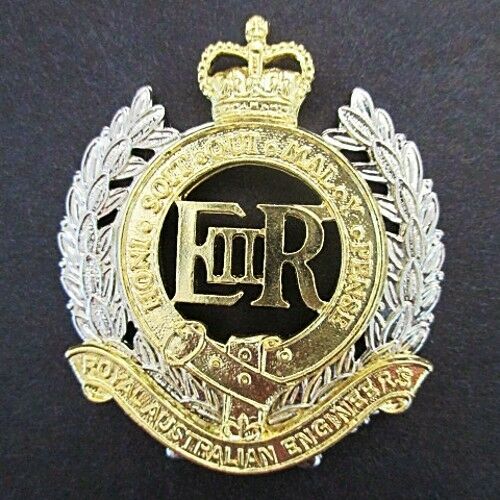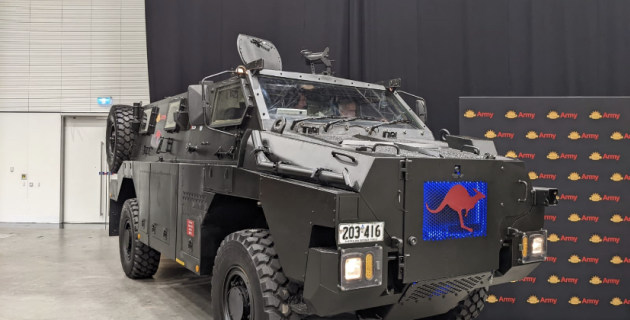The Albanese government is stealthily locking up our coastal waters for massive offshore wind farms. They’re setting aside six huge ocean reserves around the country to host thousands of sky-scraper sized wind turbines. You’ll be able to see them from the beach, and if you own a house with an ocean view, they’ll be right outside your window.
But here’s the kicker: these turbines aren’t being installed near our cities, where most of the electricity is consumed. Nope, they’re in regional Australia. Just like the Chinese-built monstrosities ruining farms and bushland nationwide. If you’re one of the inner-city elites or activists advocating for this, you won’t be affected. Like most of their climate nonsense, it’s a problem for others to deal with. The elites and activists don’t bear the brunt; that’s left to Aussie families and farmers. You won’t see any of these enormous wind turbines from Anthony Albanese, Chris Bowen or Adam Bandt’s inner-city residences, that’s for sure.
They plan to lock up more than 37,000 square kilometres of ocean for this madness—an area larger than greater Sydney and Brisbane combined. From Gippsland in Victoria to the Hunter and Illawarra in NSW, and one of the largest areas in WA, where Albanese plans to shut off a vast stretch of ocean from Mandurah to Cape Naturaliste. Who asked for this? Not us. This is not what Australians voted for.
We have ample coal and gas to power our nation well into the next century. We have enough uranium to sustain nuclear power for millennia – proven and reliable technology. We don’t need unreliable foreign renewables.
But this isn’t the only blow Labor and the Greens have dealt working Australians this week. They recently pushed their ute tax through parliament, meaning the Australian automotive industry – and Aussies – will be paying more for utes from July 1 next year. It’s just a carbon tax disguised under another name. And guess what? No one voted for that either.
Do they care? Not at all. The activists and elites are primarily driven by their own agendas and interests. They will push through anything to gain their own way, often disregarding the broader public opinion or the potential consequences of their actions. These groups are typically focused on achieving their specific goals, whether they be political, social, or economic, and are willing to use their influence and resources to ensure their objectives are met. Their commitment to their cause can make them relentless, sometimes leading to actions that overlook or even dismiss the needs and concerns of the general populace.
Marking the first time in history for the Whitsunday Region, members of 3rd Combat Engineer Regiment were granted Freedom of Entry into the city in 2017, in heartfelt recognition of their invaluable assistance following Tropical Cyclone Debbie. The Freedom of Entry parade was exercised on the 11 May 2024 by 3rd Combat Engineer Regiment amongst the local community at Airlie Beach, Queensland. The honour of the Freedom of Entry became popular during the nineteenth century and draws inspiration from medieval history. A Freedom of Entry is the highest honour a city may bestow on the Australian Defence Force and is celebrated with a ceremonial parade through the city streets.
The recent release of the CSIRO’s GenCost report has once again brought the debate on nuclear power to the forefront. While the report includes significant findings, such as the cost comparison between large nuclear reactors and small modular reactors, it also contains several serious limitations that need to be addressed.
Misrepresentation of Costs and Longevity
One of the primary criticisms of the GenCost report is its failure to account for the full system cost of renewables. Renewable energy sources like wind and solar require substantial investment in storage and grid infrastructure to manage their intermittency. These additional costs are often underrepresented in cost comparisons, giving an incomplete picture of the true economic landscape. In contrast, nuclear power provides a stable, continuous output, reducing the need for extensive storage solutions and grid upgrades.
Moreover, the report incorrectly assumes that the economic life of a nuclear power plant is equivalent to that of a solar or wind farm. This is a significant oversight. Nuclear reactors have a lifespan of 60 to 80 years, far surpassing the 20-30 year lifespan of most renewable installations. This extended operational period allows for the initial capital investment in nuclear power to be amortized over a much longer time, ultimately reducing the levelized cost of electricity (LCOE) produced by nuclear plants.
Global Trends and Commitments
The global commitment to nuclear power underscores its viability as a key component of the future energy mix. Over 50 countries are planning to introduce or expand their nuclear capabilities, driven by the need for reliable, low-carbon energy sources. The International Atomic Energy Agency (IAEA) projects a significant increase in nuclear capacity by 2050, highlighting the crucial role nuclear power is expected to play in achieving carbon reduction targets and ensuring energy security.
Countries such as France, China, and Russia are leading the way in nuclear innovation and deployment. France, for instance, derives about 70% of its electricity from nuclear energy, demonstrating the feasibility of large-scale nuclear power integration. China is rapidly expanding its nuclear fleet to meet growing energy demands while reducing reliance on coal, and Russia is pioneering advanced nuclear technologies, including fast breeder reactors and floating nuclear power plants.
Addressing the Timeline and Cost Concerns
The CSIRO report estimates that building a nuclear reactor in Australia would take 15 years and cost more than $8.6 billion. While these figures might seem daunting, they do not reflect the advancements in modular reactor technology and streamlined regulatory processes that many countries are adopting. Small modular reactors (SMRs) and other next-generation nuclear technologies promise reduced construction times and costs due to their modular nature and enhanced safety features.
Furthermore, initial costs should be weighed against long-term benefits. Nuclear power plants, once established, offer predictable and stable energy costs, insulating consumers and industries from the price volatility often associated with fossil fuels and the intermittency of renewable sources. Additionally, the investment in nuclear power infrastructure contributes to energy independence and resilience, reducing reliance on imported fuels.
Conclusion
Despite the limitations highlighted in the GenCost report, nuclear power remains a crucial and viable option for Australia’s energy future. Its ability to provide stable, long-term, low-carbon energy makes it an essential component of a diversified and resilient energy strategy. As the global trend indicates, the commitment to expanding nuclear power infrastructure is not only feasible but necessary to meet the dual challenges of climate change and energy security. It is imperative for policymakers to consider the full scope of benefits and advancements in nuclear technology when making decisions about the nation’s energy future.
The Australian Defence Force (ADF) is focusing on transitioning its vehicle fleet to electric propulsion, aligning with global trends in defence equipment. During a visit to the Hunter Valley on May 20, Minister Richard Marles emphasized the importance and versatility of electric vehicles (EVs) for future operations.
The ADF has already tested an electric Bushmaster vehicle prototype, demonstrating its capabilities during field training at Gallipoli Barracks. This initiative marks the beginning of a broader effort to electrify ADF vehicles, enhancing sustainability, durability, and performance in conflict environments.
Collaboration with companies like 3ME Technology, which specializes in lithium-ion battery systems and EV technology, is crucial for advancing these goals. The Deputy Prime Minister highlighted the importance of domestic innovation in defence manufacturing and the potential benefits of hybrid tactical vehicles, such as silent operation and reduced thermal signatures.
Newly inaugurated Taiwanese President Lai Ching-te has sparked a verbal clash with China, escalating tensions in one of the world’s most contentious regions. As the world fears a direct conflict involving the United States and its allies against China, President Lai’s strong stance against Beijing’s ambitions has intensified the situation.
Retired Admiral Philip Davidson, former US Indo-Pacific Commander, warned that China’s intentions towards Taiwan could manifest within this decade, threatening the global order. Beijing aims to challenge US leadership in the international arena, moving its goal closer from 2050.
The US strategy of “strategic ambiguity” has previously kept Taiwan Strait tensions in check. However, this approach now faces scrutiny as regional dynamics shift.
President Lai’s inaugural address emphasized Taiwan’s commitment to democracy and defiance against external pressures. He pledged to transform Taiwan amid rising tensions with China and to maintain peace and cooperation in the Indo-Pacific region.
Despite political challenges within Taiwan’s legislature, President Lai remains focused on democratic principles, national interests, and international collaboration. His administration aims to bolster Taiwan’s role as a beacon of democracy and global prosperity.
By BEN PACKHAM – Australian
FOREIGN AFFAIRS AND DEFENCE CORRESPONDENT
- 8:55PM MAY 21, 2024
ED: Summery of the article in the Australian by Ben Packham. Photo: Private Richard Leslie Norden credit Australian
 Defence Minister Richard Marles has been criticised for delaying a decision on awarding a Victoria Cross (VC) to Vietnam War hero Private Richard Leslie Norden, with some accusing him of using the delay for political purposes. The Defence Honours and Awards Appeals Tribunal recommended in July 2022 that Norden receive the VC for his valour during the 1968 Battle of Fire Support Base Coral. Despite this, Marles has not acted on the recommendation for nearly two years, missing a significant opportunity to award the honour during the 50th anniversary of the end of Australia’s involvement in Vietnam.
Defence Minister Richard Marles has been criticised for delaying a decision on awarding a Victoria Cross (VC) to Vietnam War hero Private Richard Leslie Norden, with some accusing him of using the delay for political purposes. The Defence Honours and Awards Appeals Tribunal recommended in July 2022 that Norden receive the VC for his valour during the 1968 Battle of Fire Support Base Coral. Despite this, Marles has not acted on the recommendation for nearly two years, missing a significant opportunity to award the honour during the 50th anniversary of the end of Australia’s involvement in Vietnam.
Veterans and advocates believe this delay is linked to the controversial issue of stripping medals from commanders implicated in war crimes identified in the Brereton Report on Afghanistan. They suggest Marles might be holding back the VC award to use it as a positive distraction when announcing the revocation of other military honours, which is expected to be highly contentious.
Retired Lieutenant Colonel George Hulse, who fought alongside Norden, expressed concerns that the VC decision is being manipulated to soften the backlash from removing medals. He and other veterans have approached Marles and Veterans’ Affairs Minister Matt Keogh multiple times for an update but have received no response. Alan “Jack” Parr, another veteran of the battle, also believes the delay is politically motivated and connected to the Brereton Report.
Private Norden, posthumously recommended for the VC, demonstrated extraordinary bravery in May 1968. His citation details how he repeatedly risked his life under heavy enemy fire to save a wounded comrade and retrieve another’s body, killing multiple North Vietnamese soldiers in the process. Despite this heroism, he only received the Distinguished Conduct Medal at the time.
The delay in awarding Norden the VC has caused frustration among the veteran community, with many unable to understand why the decision is stalled. Vietnam Veterans’ Association President Max Ball criticized the government for the hold-up, stressing that the Tribunal’s recommendations should not be influenced by other considerations. Norden’s family, particularly his brother Roger, remains hopeful but has been kept in the dark regarding the progress of the recommendation.
The situation is reminiscent of the posthumous VC awarded to naval seaman Edward “Teddy” Sheean in 2020, which was initially rejected by Defence Minister Linda Reynolds but later approved by then-Prime Minister Scott Morrison. Marles has also pledged to hold Australian Defence Force commanders accountable for war crimes committed in Afghanistan, indicating that decisions on these matters are under careful review.
The controversy highlights a broader issue of political manoeuvring within the military honours system, where decisions on recognizing valour are perceived to be influenced by broader political considerations rather than solely based on merit. Critics argue that such delays and political entanglements undermine the integrity of military awards and erode trust among veterans and their families.
In conclusion, the delay in awarding Private Richard Norden the Victoria Cross has been met with significant backlash from the veteran community and raises concerns about the politicisation of military honours. The intertwining of this decision with the sensitive issue of addressing war crimes in Afghanistan adds a layer of complexity and suspicion regarding the motives behind the delay.
My apologies. There will be no posts today as we are upgrading our security. Ray
Take an exclusive look at Europe’s cutting-edge nuclear reactor on Olkiluoto Island. Nick Cater explores the clean, reliable energy in Finland provided by nuclear power and the environmental benefits it offers.









